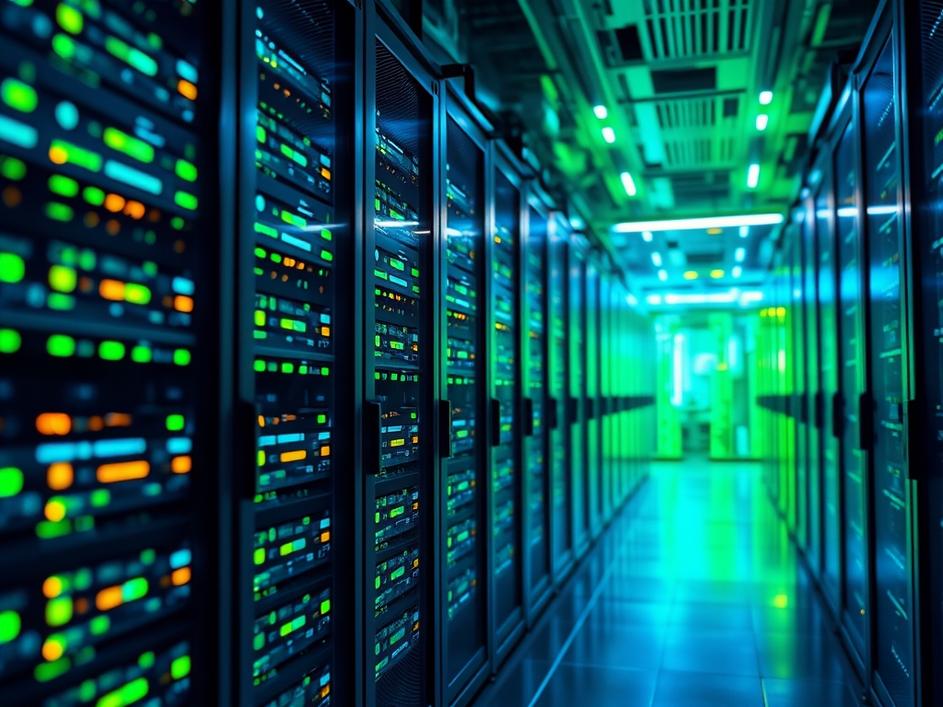


We are a digital agency helping businesses develop immersive, engaging, and user-focused web, app, and software solutions.
2310 Mira Vista Ave
Montrose, CA 91020
2500+ reviews based on client feedback

What's Included?
ToggleIt feels like every day we hear about new breakthroughs in artificial intelligence. From helpful chatbots to complex systems that can analyze mountains of data, AI is quickly changing how we live and work. But what many people don’t realize is that behind every smart AI, there’s a whole lot of serious computer power. Running these advanced programs isn’t like opening a simple app on your phone; it needs incredible computing muscle, the kind that can only come from specialized hardware. The demand for this power just keeps growing, and companies are always looking for the newest, fastest tools to keep up. It’s a constant race to build AI that’s not just good, but truly brilliant, and that means pushing the limits of what technology can do. This week, we got some interesting news that highlights just how intense this race is.
A company called Dataknox, which works closely with NVIDIA, recently announced a big step in this direction. They’ve managed to get their hands on some of the very latest technology: QuantaGrid D75H-10U servers equipped with NVIDIA’s HGX B300 hardware. Think of these as the super-powered brains for future AI systems. Because Dataknox is a recognized partner with NVIDIA, they get to be at the front of the line for these cutting-edge tools. This isn’t just about getting new gadgets; it’s about securing an early advantage in a field where every bit of speed and efficiency counts. It shows a clear commitment from Dataknox to stay ahead, making sure they can offer their clients the absolute best when it comes to powering complex AI projects. It’s a move that will likely shape how many AI projects are built in the coming months.
So, what exactly does getting access to this specific gear mean? The NVIDIA HGX B300 hardware is built on what’s called the ‘Blackwell architecture.’ This is the next big thing in AI processing. Imagine trying to solve a really complicated puzzle. With older tools, it might take you hours. With these new systems, that same puzzle could be solved in minutes, or even seconds. That’s the kind of leap we’re talking about. Dataknox getting this early means they can start building and testing their AI setups with this top-tier equipment sooner than many others. It puts them in a strong position to help businesses that need serious computing power for their own AI ideas, whether it’s for developing new services or making existing ones much smarter. It’s not just about having the gear; it’s about being able to offer that next-level capability to the companies they serve, which is a big deal in today’s competitive tech world.
The benefits of this new hardware are pretty straightforward, but incredibly impactful. For one, it promises AI inference that’s significantly faster – we’re talking about improvements that can be up to 30 times quicker. In simple terms, ‘inference’ is when an AI model uses what it’s learned to make predictions or decisions. If an AI can do this 30 times faster, it means things like real-time analysis, instant responses from chatbots, or quicker processing of vast datasets become much more achievable. Imagine a medical AI that can process scans and suggest diagnoses almost instantly, or a financial AI that can spot market trends in the blink of an eye. That kind of speed completely changes what’s possible. Plus, these new systems are designed to be much more energy-efficient. Running powerful AI models uses a lot of electricity, which isn’t great for the environment or a company’s budget. Better efficiency means less power consumption, saving money and reducing environmental impact. It’s a win-win, allowing for more powerful AI without the usual proportional jump in operational costs.
From my perspective, this move by Dataknox isn’t just a corporate announcement; it’s a peek into the evolving landscape of AI development. As AI models become more complex and sophisticated, the sheer computational power needed to train them and run them grows exponentially. Companies that can provide this ‘next-generation AI infrastructure’ are essentially providing the building blocks for the future of artificial intelligence. It’s not just about incremental improvements; it’s about enabling entirely new kinds of AI applications that were previously too slow, too expensive, or too power-hungry to even consider. For businesses looking to truly innovate with AI, having access to such robust and efficient systems is no longer a luxury, but a necessity. It highlights a widening gap between those who can access and deploy the latest hardware and those who might struggle to keep pace, subtly reshaping the competitive dynamics within various industries that rely on advanced AI.
One of the key promises of this new hardware is its ability to support ‘scalable model training.’ What does that mean? Well, AI models are getting bigger and more intricate. Training these large models often takes days, weeks, or even months, requiring massive clusters of computers working together. With more powerful and efficient hardware, companies can train these extensive models faster, experiment with more parameters, and ultimately build smarter, more capable AI. It also means they can do this on a bigger scale without running into the same bottlenecks or hitting prohibitive costs. This is crucial for fields like scientific research, advanced data analytics, and developing truly autonomous systems. Companies like Dataknox, acting as key enablers, allow a broader range of businesses to tap into these capabilities, effectively democratizing access to high-end AI development, or at least making it more accessible to those with the resources to invest in it. It suggests that the path to creating even more sophisticated AI is paved with increasingly powerful and specialized hardware, carefully deployed by expert partners.
In conclusion, the news about Dataknox securing early access to NVIDIA’s newest AI hardware is more than just a company update. It’s a clear signal of where the AI industry is heading. As AI continues its rapid development, the underlying infrastructure that powers it must evolve just as quickly. Getting ahead in this race means having the best tools available, and using them smartly. Faster processing, better energy use, and the ability to handle bigger, more complex AI models are not just technical specifications; they are the foundations upon which the next wave of AI innovations will be built. This kind of investment ensures that the dreams of tomorrow’s AI applications can become today’s reality, pushing the boundaries of what these intelligent systems can achieve. It’s an exciting time to watch how these technological advancements translate into real-world applications, making our digital world both faster and smarter.



Leave a reply